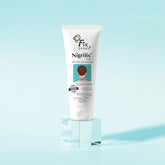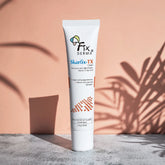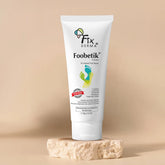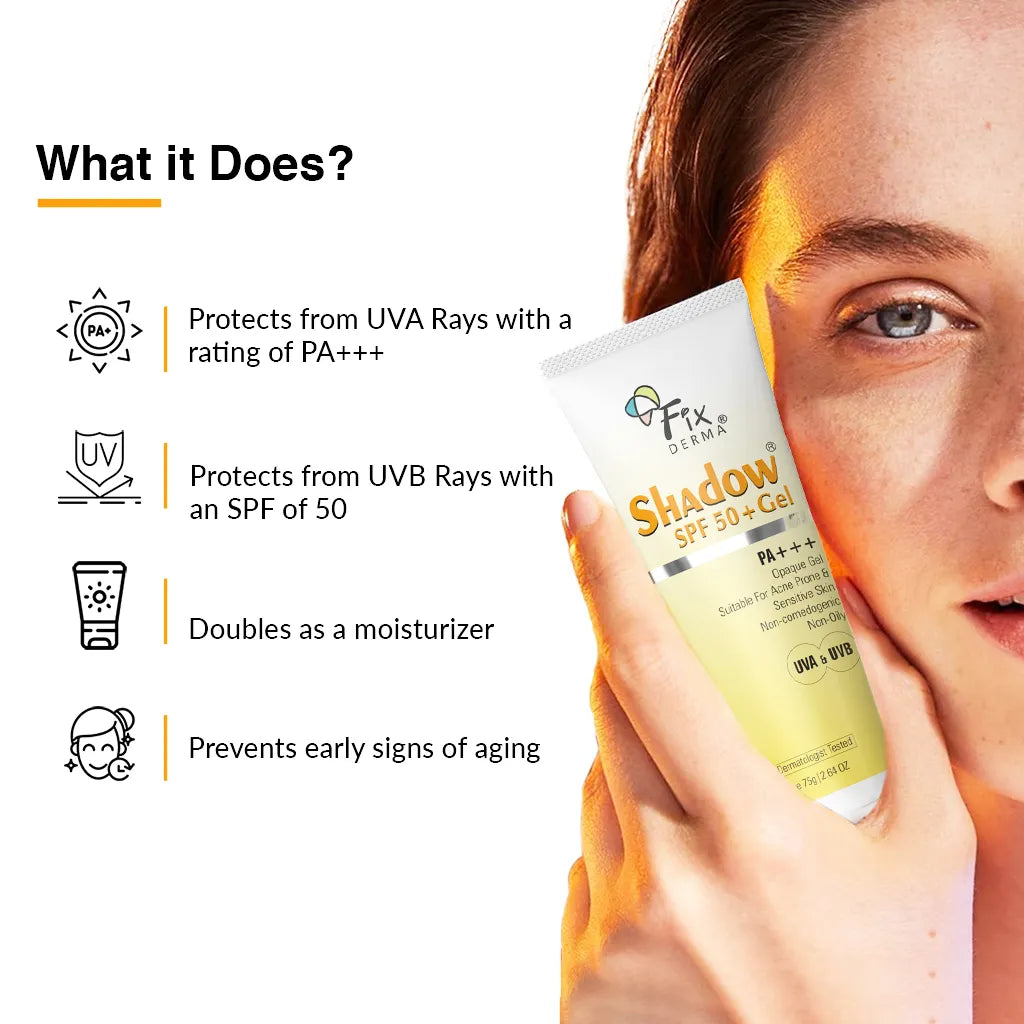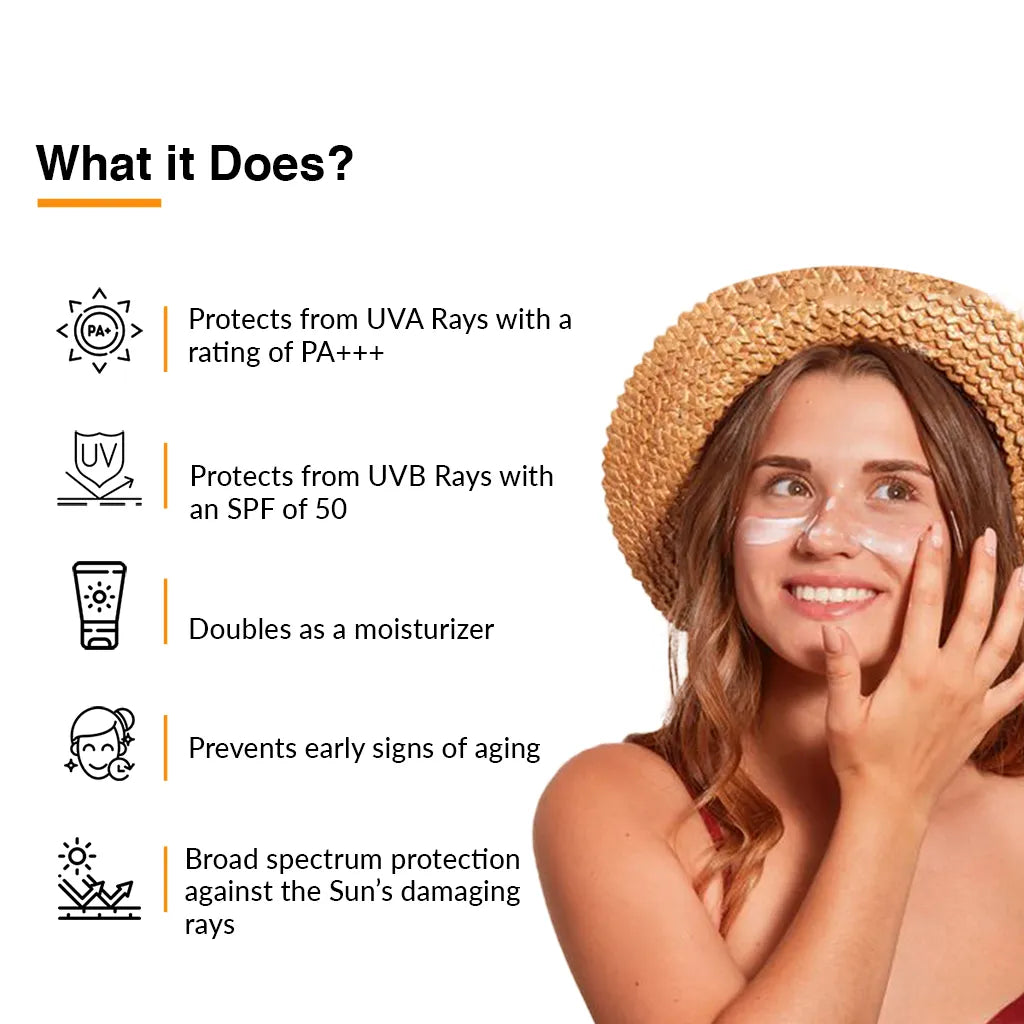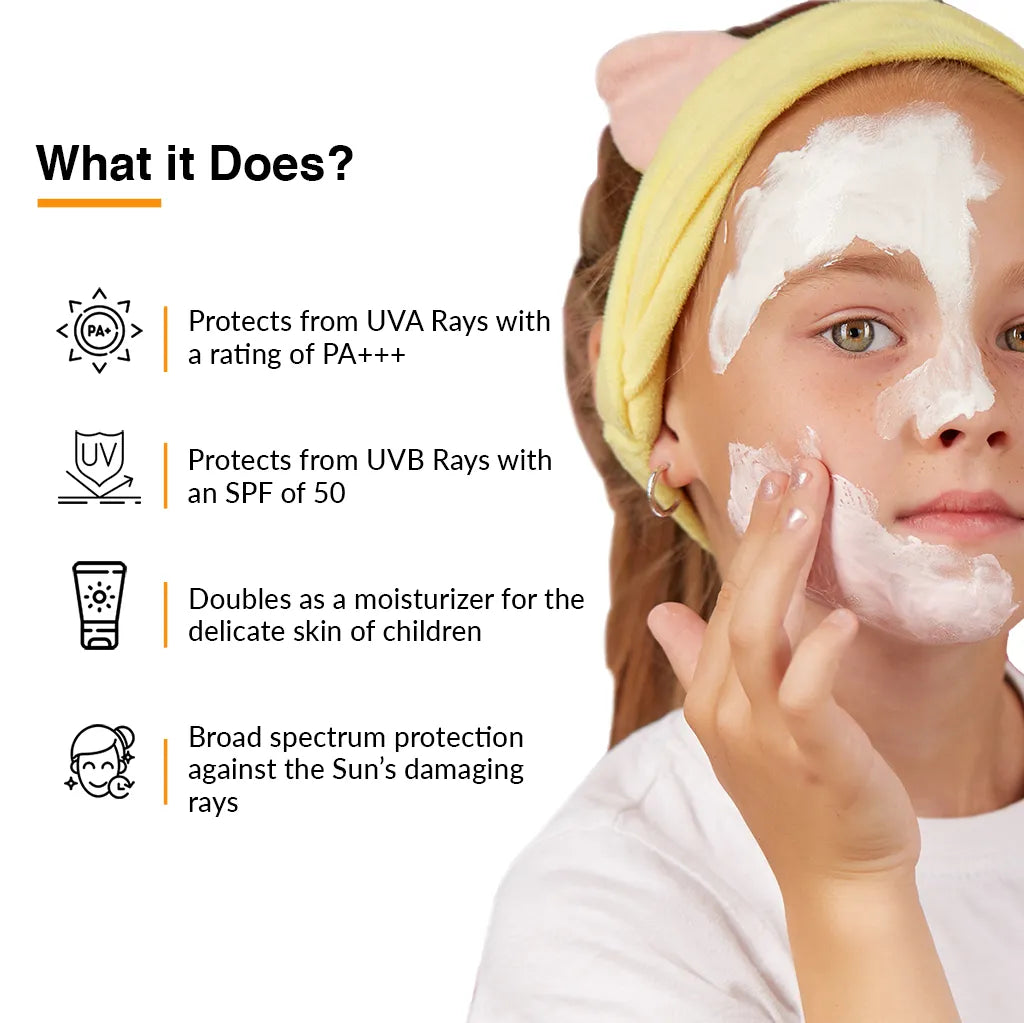Sunscreen Myths and Facts: Understand It Through Labels

Sunscreen is a common topic that often triggers confusion between users. Yes, we all are aware of the fact that healthy skin can be achieved through using sunscreen along with other ingredients and products. Among the sun protection aids, a variety of options are available these days. This might lead you to believe in the myths and misconceptions easily. Even though the purpose of all these products are to protect the skin from harmful sun rays (UVA and UVB rays), the ingredients that comprise this product can be different.
Today, let's debunk a few widespread myths about sunscreen, emphasizing the importance of incorporating the product into skincare routine. Understanding the underlying ‘whys’ is essential to conclude which ingredient and which product works on your skin.
SPF and Sunscreen Application Myths Debunked: Setting the Record Straight
Several myths need to be busted to understand sunscreen and its uses better. This is an important step as many people don’t know how UV rays can affect the skin adversely and how serious it is.
Myth 1: You don’t need to apply sunscreen all the time.
Fact: Sunscreen is always necessary, even if our body is exposed to the sun for a brief amount of time. Even while swimming sunscreen has to be used as UV rays can penetrate the top layer of your skin causing burns.
Myth 2: Sunscreen can cause vitamin deficiency.
Sunscreen protects your skin from UV rays that harm the skin.
Ref 1: Sunscreen will prevent the body from absorbing Vitamin D is a vital nutrient for human health, and the body makes it easily through exposure to UV rays. Sunscreen, however, blocks UV rays. So, in theory, using sunscreen 100 percent of the time would prevent a person from getting the proper levels of vitamin D.
However, sunlight can penetrate clothing, sunscreens lose their effectiveness over time, and it is likely a person will forget to put sunscreen on every time they see the sun. Many scientists and dermatologists suggest that just 5 to 30 minutes of sun exposure per day can create the proper amount of vitamin D in the body.
Ref 2: Fact. Even well-applied sunscreen lets 2% to 3% of the sun's ultraviolet B rays reach your skin, and your body needs only a little to produce vitamin D. Rather than risk skin cancer, it's better to seek your vitamin D needs through a healthy diet or supplement.
Myth 3: People with dark skin do not need sunscreen
Fact: People with darker skin tones also require sun protection, even though those with lighter skin tones are more prone to skin cancer generally. Although the increased melanin in the skin can protect against UV radiation, skin cancer in those with darker skin tones is frequently diagnosed in its advanced stages. Therefore, everyone should use a broad-spectrum sunscreen to reduce the risk of skin cancer and other skin disorders.
Myth 4: Tanning beds provide sun protection
Fact: Tanning beds only offer you tan skin with the help of high concentrations of UVA light. This causes the skin to darken but sunscreen has to be applied when you are in the sun as sunlight contains UVB rays also which can burn the skin.
Myth 5: Sunscreen is not needed while using makeup
Fact: Makeup can provide a slight protection from the sun, but we can assure you that it's nowhere near what sunscreen offers. Hence, sunscreen is to be applied after applying ingredients and before putting makeup on the skin.
Myth 6: Sunscreen works better than covering up
Fact: Sunscreen can never protect you 100% from the sun’s rays. Hence, covering up is a much-needed factor for better protection. The more your skin is exposed to the sun, the more you’re at risk of skin conditions.
Myth 7: Sunscreen protects you from tanning.
Fact: A sunscreen cannot necessarily protect you completely from tan. Sunscreen protects your skin from most of the sun rays, however, a few of them can reach your skin, meaning you are likely to get tanned a little. Reapplying the sunscreen can lower the chances of getting tanned.
Myth 8: A single application of sunscreen is enough

Fact: Sunscreen needs to be reapplied every 2 hours for better protection. Overtime in the sun can make the sunscreen lose its absorption power.
Myth 9: Sunscreens don’t expire
Fact: The fact is that sunscreen does expire. The active ingredients break down over time and an expired product will not offer any protection to the skin from the sun. Also, it is important not to expose your sunscreen to extreme heat or cold as this can affect the active ingredients of the formula.
Myth 10: A Little Goes a Long Way
Fact: Many people underestimate the amount of sunscreen needed. For the face and neck, you need two finger lengths or half a teaspoon of sunscreen for great coverage. For each arm and leg, four finger lengths of sunscreen are required. For whole-body coverage, you’ll need approximately one ounce of sunscreen that has to be applied at least 15 minutes before going out.
Myth 11: You do not need sunscreen indoors
Fact: Even if you are inside, UVA rays can penetrate the glass and similar materials that make you exposed to the harmful rays. Application of sunscreen is advised on a hot, sunny day as well as a cloudy day irrespective if you are staying outdoors or indoors.
Sunscreen Label Decoding: What to Look For
Even though SPF is a widely known term when it comes to sunscreen, other terms like PF, Non-comedogenic, broad-spectrum, etc often confuse a new user. Together, let's analyze the essential terms found on sunscreen labels to have an improved understanding of how these misconceptions might be addressed and understood more precisely.

SPF/ Sun protection factor:
SPF is the number that indicates the amount of protection a sunscreen offers. Remember it this way, the higher the SPF number, the higher the protection offered. Sunscreen with 30-50 SPF allows you to spend more time in the sun, protecting you from UV and UVB rays.
Note: Here’s a quick info on how much UVB light each SPF can absorb:
- SPF 15: 93% of the sun's UVB rays
- SPF 30: 97% of the sun's UVB rays
- SPF 45: 98% of the sun's UVB rays
- SPF 50: 98% of the sun's UVB rays
The absorption amount offered by each sunscreen can be calculated by 100 - (100/SPF)
- Broad-Spectrum: A broad-spectrum sunscreen offers strong protection not only from UV rays (ultraviolet rays) but from UVB rays (ultraviolet B rays) too which can cause sunburn. These rays penetrate deeper layers of the skin resulting in wrinkles, fine lines, premature ageing, etc if not taken proper care of.
- PA+: If you pick a sunscreen, the higher PA+ is always good. PA+ is the standard protection grade of sunscreen against UVA rays. You’ll find it on the labels ranging from PA+(low) to PA+++(high).
- Non-Comedogenic: A non-comedogenic sunscreen doesn’t clog your pores with the product. This lowers your chances of experiencing breakouts keeping your sensitive and acne-prone skin safe.
- Hypoallergenic: Hypoallergenic sunscreens are prepped with gentle ingredients, prioritizing the safety of the skin. A lower chance of irritability is offered by these products and are safe for sensitive skin too.
- Water-Resistant: Water-resistant sunscreens can stay on your skin even after getting the skin wet. Sunscreens that have a higher water resistance can offer up to 80 minutes of protection in water. Sweat and water can always affect the sunscreen application and there are no sunscreens that offer 100% water resistance. Hence, reapply sunscreen every 2 hours after sweating or getting in contact with water.
Understanding Sunscreen Ingredients: What’s in Your Bottle?

Physical vs Chemical Sunscreens Sunscreens are broadly divided into 2 main types; physical sunscreens (containing minerals) and chemical sunscreens (containing organic compounds).
Physical Sunscreens: If your sunscreen is comprised of titanium dioxide, zinc oxide, or both, your sunscreen falls under the physical sunscreen category. These are also called mineral sunscreens and are perfect for people with sensitive skin. Even though these sunscreens can leave a white residue in some cases, they provide immediate protection by working on the topmost layer of the skin.
Chemical Sunscreens: Made from active ingredients like oxybenzone, octinoxate, cinoxate, dioxybenzone, ensulizole, homosalate, meradimate, octisalate, octocrylene, padimate O, sulisobenzone, avobenzone, etc, chemical sunscreens convert the UV rays into heat which are later released by the skin. Even though lightweight, these can irritate sensitive skin.
Hybrid sunscreens: These sunscreens are made of one or more active or organic ingredients from the physical and chemical sunscreens. Sunscreen types can be identified by checking the ingredients on the label under the ‘active ingredients’ section.
Broad-Spectrum Sunscreen Facts: A broad-spectrum sunscreen protects against both UVA and UVB rays. Understanding the difference is crucial for comprehensive skin protection. Ultraviolet/ UVA rays cause premature ageing which results in fine lines, wrinkles, etc. On the other hand, Ultraviolet B/UVB rays are the rays that cause sunburns.
However, if exposed to these rays for longer periods, apart from the above-mentioned skin conditions, skin cancer can also occur. For better protection from both these rays, a broad-spectrum sunscreen is recommended. Always check for FDA approval on the label to confirm that the sunscreen falls under the ‘Broad spectrum’ category.
Sunscreen and Skin Health: The Bigger Picture
Sunscreen should be an inevitable element in your skin routine, a much-needed step in attaining healthy skin. As it protects your skin from the harmful rays of the sun, it also protects you from skin conditions like early ageing, sunburn and skin cancer. Even though no sunscreen provides 100% protection from the sun, a wide range of skin issues can be prevented with the consistent use of sunscreen. Apart from sunscreen, remember to wear clothes and accessories too that allow better coverage from sun rays. And do not worry about vitamin D deficiency as it is available in the form of supplements if needed. Fatty fish, Cod liver oil, tuna, egg yolk, mushrooms, cow milk, orange juice, cereals, oatmeal, etc are good options to be included in the diet if you have low vitamin D levels.
Mastering Rosacea with Smart Choices
Effective sun protection requires a proper understanding of sunscreen products and most importantly, the labels. You can safely improve the quality of your skin by introducing a simple element, sunscreen to your routine. Choosing the right sunscreen and products, apt for your skin type, will enhance the longevity of your skin too.
